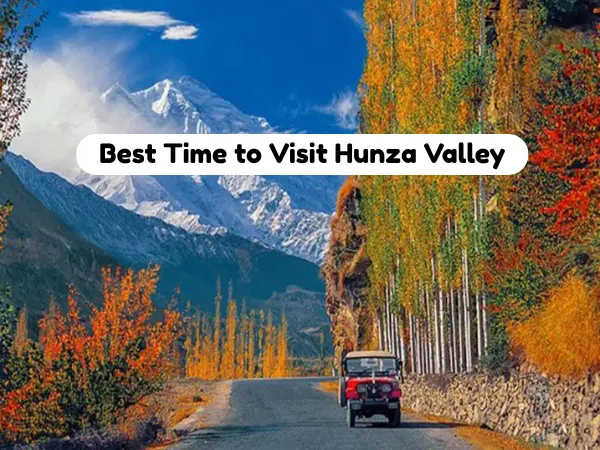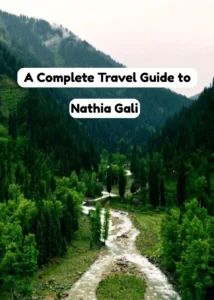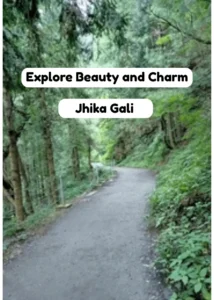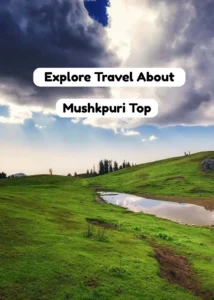
Hunza Valley, nestled in Pakistan’s Gilgit-Baltistan region, is a paradise of towering peaks, crystal-clear lakes, and ancient forts. Known for its breathtaking landscapes and welcoming culture, it’s a must-visit for adventure seekers and nature lovers. But timing your trip right is key to making the most of it. In this guide, we’ll break down the best time to visit Hunza Valley based on weather, activities, and seasonal highlights, helping you plan an unforgettable journey in 2025.
Why Timing Matters in Hunza Valley
Hunza’s high-altitude location (around 2,438 meters) means dramatic weather shifts throughout the year. Summers are mild and green, while winters bring heavy snow and road closures. The best time to visit Hunza Valley depends on what you want: blooming flowers, trekking trails, colorful foliage, or snowy serenity. Expect temperatures from -15°C in winter to 25°C in summer, with varying accessibility via the Karakoram Highway.
Seasonal Breakdown: When to Go
Here’s a month-by-month look at Hunza’s seasons, drawing from local weather patterns and tourism trends for 2025.
Spring (March to May): Blossom Season Magic
Spring is one of the top picks for the best time to visit Hunza Valley, especially for photographers and flower enthusiasts. Cherry and apricot trees burst into pink and white blooms around mid-March, creating a fairy-tale landscape. Weather is mild (5–15°C), with clear skies perfect for sightseeing.
Highlights: Attend the Cherry Blossom Festival in April; explore Altit and Baltit Forts without crowds.
Activities: Light trekking to Rakaposhi Viewpoint or Attabad Lake.
Pros: Fewer tourists, vibrant colors, affordable stays.
Cons: Occasional rain; higher elevations may still have snow.
Tip: Book early for blossom-viewing spots like Karimabad—it’s peak season for domestic travelers.
If you’re chasing floral displays, late April is ideal.
Summer (June to September): Peak Adventure Time
Widely regarded as the best time to visit Hunza Valley for most travelers, summer offers warm weather (15–25°C) and open roads. The valley is lush and green, with melted snow revealing hiking trails and glacial views. This is prime time for outdoor fun, though expect more visitors.
Highlights: Boat on Attabad Lake, hike to Passu Glacier, or drive to Khunjerab Pass (Pakistan-China border).
Activities: Trekking (e.g., Ultar Sar Base Camp), rafting on Hunza River, cultural festivals like Ginani Harvest.
Pros: All attractions accessible; long daylight hours for exploration.
Cons: Higher prices; possible afternoon showers in July-August.
Tip: Pack light layers and sunscreen—nights can cool to 10°C. Families love this season for its family-friendly vibes.
June to August suits trekkers, while September brings fewer crowds.
Autumn (October to November): Golden Foliage Spectacle
Autumn rivals summer as the best time to visit Hunza Valley for its stunning fall colors. Leaves turn golden-red, contrasting with snow-capped peaks like Rakaposhi (7,708m). Moderate temps (5–20°C) make it comfortable for all activities.
Highlights: Witness the harvest season; photograph Passu Cones and Hussaini Suspension Bridge in vibrant hues.
Activities: Scenic drives along the Karakoram Highway; visit local bazaars for fresh apricots and walnuts.
Pros: Breathtaking scenery; lower humidity; budget-friendly off-peak deals.
Cons: Early snow possible in late November, closing some passes.
Tip: October is photographer’s heaven—aim for mid-month when colors peak.
This is the sweet spot for a mix of beauty and tranquility.
Winter (December to February): Snowy Solitude
Winter is the least crowded but most challenging time, with temps dropping to -10°C to -20°C and heavy snowfall. It’s not the best time to visit Hunza Valley for everyone, but adventure seekers love the winter wonderland vibe.
Highlights: Skiing at Naltar Valley; frozen Attabad Lake views.
Activities: Snow sports in Ghulkin or Altit; cozy stays with local Wakhi hospitality.
Pros: Serene isolation; lower costs; unique festivals like Chilam Joshi.
Cons: Road closures (e.g., Khunjerab Pass); limited flights to Gilgit.
Tip: Layer up with thermals and check weather apps—flights often get canceled.
Reserve for hardy travelers seeking peace.
Hunza Weather and Temperature Overview
- Spring: 5–15°C, blooming but unpredictable.
- Summer: 15–25°C, warm and accessible.
- Autumn: 5–20°C, crisp and colorful.
- Winter: -10–5°C, snowy and cold.
Monsoon influences are minimal, but always monitor forecasts via apps like AccuWeather for 2025 updates.
Planning Tips for Your Hunza Trip
How to Get There: Fly to Gilgit (1 hour from Islamabad) then drive 2–3 hours, or take the scenic 16-hour Karakoram.
Highway bus. In 2025, improved infrastructure means smoother travel.
Best Duration: 5–7 days to cover highlights like Karimabad, Attabad Lake, and Khunjerab.
Average Budget: Expect PKR 50,000–100,000 per person for a week, including stays and tours. Summer is pricier.
What to Pack: Layers, sturdy shoes, sunscreen, and a reusable water bottle—Hunza’s water is famously pure.
Sustainable Travel: Respect local customs; use eco-friendly tours to preserve this UNESCO-nominated site.
2025 Events: Cherry Blossom Festival (April), Silk Route Festival (June), Autumn Harvest (October)—plan around them for cultural immersion.




